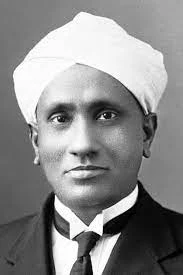Let’s discover the Nobel Laureates of India during the late 19th and early 20th centuries.
Sir C V Raman
Chandrasekhara Venkata Raman was born on November 7, 1888, at Thiruchirappalli, Tamil Nadu. His father Chandrasekhara Iyer, was a Lecturer in Physics, in a local college. His mother Parvati was a housewife. He passed his matriculation when he was 12 years of age. He joined the Presidency College Madras. He passed his BA and MA examination with high distinction. He had a deep interest in Physics.
 |
| C V Raman |
While doing his MA, Raman wrote an article on the subject of Physics and sent it to the Philosophical Magazine and Nature, the science magazine of England. On reading this article, many eminent scientists in London noted the talent of this young Indian. Raman wanted to compete for the ICS examination. But to write that examination, one had to go to London. As he was poor and could not afford it, he took the Indian Financial Service Examination, conducted in India. He was selected and posted at Rangoon, Burma (now Myanmar), which was then a part of British India.
Later, while working in Kolkata, he associated himself with an Institute called 'Indian Association for the Cultivation of Science', which was the only research institution in those days. While working there, his research work came to the notice of the Vice-Chancellor of Calcutta University. The Vice-Chancellor appointed him as professor of Physics at Calcutta University. Sir Raman was in a good position in the financial service. He sacrificed his profession and joined the academic career. When he was working as a Professor he got an invitation from England to attend a science conference.
As the ship was sailing through the Mediterranean Sea, Raman got doubt, as to why the waters of the sea are looking blue. This initiated his research on light. He found out by experiment that the sea looks blue because of the 'Scattering Effect of the Sunlight'. This discovery is called "The Raman Effect". A question that was puzzling to so many other scientists was easily solved by him. His pioneering work helped him become a Member of the Royal Society of London in 1924. He was awarded Knighthood by the British Empire in 1929. This discovery also got sir Raman the Nobel Prize for Physics for the year 1930. He became the first Indian scientist to receive the Nobel Prize.
 |
| The Raman Effect |
Raman discovered "The Raman Effect" on February 28, 1928, and this day is observed as the ' National Science Day ' in India. In 1933, he joined the Indian Institute of Science, Banglore, as Director. Later he quit the post of Director and continued to work only in the Physics department. The University of Cambridge offered him a Professor's job, which he declined stating that he is an Indian and wants to serve in his own country. Dr. Homi Bhabha and Dr. Vikram Sarabhai were the students of Sir C.V Raman.
Sir C.V. Raman breathed his last on November 21, 1970
(Excerpt from SCIENCE INDIA-The National Science Magazine, ISSN 0972-8287)
-> Read on Nobel Prize Winner in Physics- Sri. Subrahmanyan Chandrasekhar
-> Read on Nobel Laureate - Sir Ronald Ross
-> Read on Indian Nobel Laureate- Dr. HarGovind Khurana
-> Read on Nobel Laureate of India- Sri. Venkataraman Ramakrishnan
| Nobel Laureate of Indian | Nobelprize | Nobel Laureate of India
| sir chandrasekhara venkata raman | c v raman | the raman effect | raman effect


Comments
Post a Comment
Comment here